- Home
- Alison Weir
The Lady in the Tower: The Fall of Anne Boleyn Page 4
The Lady in the Tower: The Fall of Anne Boleyn Read online
Page 4
Anne was now older than Katherine had been when her last child was conceived, and Henry may well have been aware of this.1 Yet there was perhaps another, deeply atavistic reason for the King’s growing conviction that he had incurred the wrath of the Deity through marrying Anne. In a superstitious age, when it was widely believed—even by educated, rational people—that supernatural powers governed or subverted the natural order of things, a string of miscarriages or stillbirths did not happen without good reason. Either they were the result of divine displeasure—as Henry believed was his punishment for marrying Katherine of Aragon, his brother’s widow—or they were brought about by witchcraft. It may have been in this context that Anne’s latest miscarriage “made an ill impression on the King’s mind” and reinforced his growing conviction that this second marriage too “was displeasing to God.”2
On the day of Anne’s miscarriage, Chapuys—not yet having heard of it, for he does not mention it in his dispatch, and was not to report it until February 10—was told by the King’s cousin, Henry Courtenay, Marquess of Exeter, and the Marchioness, Gertrude Blount, how they had been “informed by one of the principal persons at court” that the King “said to someone in great confidence and, as it were, in confession, that he had made this marriage seduced and constrained by sortileges [i.e., divination or sorcery], and for this reason he considered it null, and that this was evident because God did not permit them to have any male issue, and that he believed he might take another wife, which he gave to understand that he had some wish to do.”3
It is easy to conjure up an image of a bitterly disappointed Henry railing at cruel Fate and saying such things. Possibly he uttered these chilling words in the heat of the moment, needing someone to blame for the loss of his son. Probably he perceived the avenging hand of God in the tragedy. But he might also have felt the need to explain having been so long in thrall to this woman he had ill-advisedly married, and who so grievously failed him, and one way to do this was by claiming that he had been bewitched.
It has been argued that, in speaking of sortileges, Henry—if he uttered these words at all—was merely referring to having been seduced into marriage by predictions that it would bring him heirs,4 yet the rest of the reported speech makes it clear he believed there was an element of sorcery involved, for predictions or divinations regarding its fruitfulness would not have rendered the marriage invalid.
Chapuys was rightly skeptical. “The thing is very difficult to believe, although it comes from a good source,” he wrote to his master. “I will watch to see if there are any indications of its probability.”5 Anne, the ambassador added, had already repented of her hasty words of reproach, and was “in great fear.”6
Certainly she had good reason to be so, for Henry might now consider her as barren of sons as Katherine, and find a pretext to have their marriage annulled and their daughter declared a bastard, just as he had with Katherine and Mary. But Anne did not have Katherine’s powerful friends—in fact she had not very many friends at all—so there would be few to champion her cause, and the outcome would be alarmingly predictable. Without Henry, she would be an object of derision, calumny, and hatred; her very life might well be at risk.
We might wonder if Anne’s great fear sprang from finding out that Henry believed her guilty of witchcraft. At that time, witchcraft was not an indictable offense; it was not until 1542 that an act was passed under Henry VIII making it a secular crime, and it did not become a capital offense until 1563, under Elizabeth I. Prior to that, the penalty for witchcraft had been determined according to evidence of actual criminality, with proof of evil deeds necessary to obtain a conviction; in the cases of persons of high rank, there was often a suspicion of treason against the Crown.
In the previous century, three royal ladies had famously been accused of witchcraft. In 1419, Joan of Navarre, the widow of Henry IV, was imprisoned for three years on trumped-up charges of sorcery on the orders of her stepson, Henry V, who wanted her dowry to pay for his wars, and she was not freed until after his death in 1422. In 1441, Eleanor Cobham, the wife of Humphrey, Duke of Gloucester, uncle of Henry V, was convicted of practicing witchcraft upon Henry VI, and was incarcerated on the Isle of Man for the rest of her life. Unlike Queen Joan, she was probably guilty as charged. Lastly, in 1469, Richard Neville, Earl of Warwick, then in rebellion against Edward IV, had paid two informers to accuse Jacquetta of Luxembourg, Duchess of Bedford and mother of Edward’s consort, Elizabeth Wydeville, of making obscene leaden images of the King and Queen and practicing her black arts upon them to bring about her daughter’s marriage to Edward—a marriage that Warwick had opposed. The duchess was also accused of casting another image to bring about Warwick’s death. When the witnesses whom Warwick had bribed refused to testify upon oath, the case against her collapsed, and she was freed and declared innocent.
Sir Thomas More also asserted that in 1483 the future Richard III accused Elizabeth Wydeville of using sorcery to wither his arm, although this tale is probably apocryphal. Nevertheless, to the medieval mind, witchcraft was a very real threat; there was a history of it being used as a political weapon for nefarious ends, and Henry VIII’s suspicion of sorcery would have been fully in keeping with the spirit of the times. He would surely have known about these precedents.
Did Henry say much the same thing to Anne as he had to the unnamed person referred to by Chapuys? And did he give voice to suspicions that had perhaps been festering in his imagination for some while? If so, then Anne had every reason to be fearful. For if Henry was talking about witchcraft, then he might well be casting about in his mind for ways of getting rid of her, weighing the idea of having their marriage dissolved, since canon law provided for an annulment on the grounds of sorcery.
Was that what Henry really intended? Given Anne’s unpopularity, the fact that she had no powerful connections to defend her, and her having a rudimentary sixth fingernail on one hand, as well as “certain small moles”7—which might have been regarded as devil’s marks in a superstitious age, or as signs of inner corruption and even divine disfavor—a charge of witchcraft might appear very credible, and would almost certainly lead to her condemnation.
What of the slender possibility that Anne had indeed dabbled in witchcraft? She had a hound called Urian, which was one of the more obscure names of Satan; in fact, he was given to her by, and named after, the courtier Urian Brereton. Then there would be her prediction in the Tower of London, made probably out of sheer desperation and bravado, that if she were to die, there would be no rain for seven years, seven being a magical number used by witches, who it was believed could control the weather. Was Henry’s long-standing infatuation with Anne that of a man under a spell? Again, there is more likely to have been a less than occult reason for it.8 It is barely credible that a woman who was an ardent evangelist and deeply committed to the cause of religious reform should secretly have resorted to sorcery.
It is also possible that the King’s talk of sortileges may have sprung purely from crushing disappointment rather than premeditated conviction, for although Anne would eventually be charged with heinous crimes, she was never accused of witchcraft, although that may well have been implicit in one of the articles of her indictment. Yet if Henry truly believed her guilty of sorcery—that most feared and sacrilegious of crimes—why did he not proceed against her immediately? It would therefore appear that the King spoke of witchcraft only in anger and frustration, or was bitterly casting about in his mind for any pretext to extricate himself from this unsatisfactory marriage.
There may be another explanation. According to Chapuys, Henry had confided his suspicion of witchcraft to an unnamed person, yet it was another anonymous person, someone high up in the court, who reported this to the Exeters (both partisans of Katherine and Mary), who in turn reported it to Chapuys. Thus the information that the ambassador received was fourthhand and came via two unnamed sources. It is not even clear if the person Henry allegedly spoke to actually told the high-ranking c
ourtier what he had said, or if the courtier overheard Henry, or if the person to whom the King uttered those words was talking about what he had said. It is therefore possible that what Chapuys heard was somewhat garbled, or even made up; such information always had its price, and this was the kind of thing that both Exeter and the ambassador would have wanted to hear. Then again, what Henry said, or was supposed to have said, was so sensational that one might not expect those recounting it to get it substantially wrong.
Whether Henry sincerely believed that Anne had snared him by witchcraft—and aside from the fact that he seems now to have been convinced that she would never bear him an heir—there were good reasons for ending their marriage, the most compelling being his genuine fear that God was displeased by it. This fear has even been described by some writers as panic, upon which Anne’s enemies would no doubt try to turn to their advantage in the weeks to come. The King was perhaps wondering if severing himself from Anne would restore his credit with the Deity, put an end to much political opposition, pave the way for a new, uncontroversial and fruitful marriage, and provide a solution to the problem of the Lady Mary.9 He may already have had these factors in mind when he had made tentative inquiries about an annulment some time prior to Katherine’s death. Certainly, from the time of Anne’s miscarriage, many people believed that the King was planning to free himself from her.
It seemed poetic justice to some when, on the very day of Katherine’s funeral, Anne lost the son who would have ensured her safety. The Imperialists in Europe rejoiced when they heard what had befallen her: “This is news to thank God for,” Dr. Ortiz wrote. “Although the King has not improved in consequence of his fall, it is a great mercy that his paramour miscarried of a son.”10
It may be that it was the stress of her insecure situation alone that caused Anne to miscarry,11 but her contemporaries believed there was more to it than that. There was rampant speculation at court. Chapuys reported on February 10 that “some think it was entirely owing to a defect in her constitution, and her utter inability to bear male children, others imagine that it was caused by the fear that the King would treat her as he treated his late Queen, which is not unlikely, considering his behavior toward a lady of the court named Mistress Seymour, to whom, as many say, he has lately made valuable presents.”12 Given that Henry had already set aside one wife in order to marry her maid-of-honor, there was every reason for Anne to worry that he might do it again, although Chapuys for some time was dismissive of rumors that Henry actually wanted to marry Jane.
When news of the Queen’s miscarriage spread, the rumors multiplied. On February 10, Chapuys also reported: “There are innumerable persons who consider that the Concubine is unable to conceive, and say that the daughter said to be hers and the abortion the other day are suppositious.”13 He meant that people thought Elizabeth to be a changeling, rather than the fruit of adultery; this was not the first, or the last, time that the blood of an English royal heir had been impugned—John of Gaunt’s political enemies had called him a changeling in the fourteenth century, and the Catholic James II’s son, Prince James Francis Edward Stuart, the so-called “warming pan baby,” would suffer the same calumny in the seventeenth century. In September 1534, Anne Boleyn had to admit to the King that her announcement of a pregnancy had been premature,14 so it is hardly surprising that those who had not seen the dead fetus did not believe in its existence. The Bishop of Faenza, in a letter to the Vatican, reported “that woman” had not been with child at all, and had much trouble concealing the fact, so “to keep up the deceit, she would allow no one to attend upon her but her sister.” (There is, however, no evidence that Anne’s sister, Mary Boleyn, was in attendance; she had been banished from court after an ill-advised marriage in 1534.) Soon, it was widely believed abroad that Anne had not been pregnant at all. Dr. Ortiz wrote on March 22 that “La Ana feared the King would leave her, and it was thought that the reason of her pretending the miscarriage of a son was that the King might not leave her, seeing that she conceived sons.”15
In 1989, Retha Warnicke put forward the startling theory that Anne’s fall came about for “the sole reason” that she had borne a deformed fetus, which in the Tudor period was associated with witchcraft, and that this raised in the King very real fears of God’s displeasure, and moved him to get rid of her. In 1585, the Jesuit Nicholas Sander, the source of so many unfounded calumnies about Anne Boleyn (including the assertion that she was Henry VIII’s own daughter), claimed that the fetus had been deformed and that Henry convinced himself that it was not his, yet there is no contemporary evidence for any of this; had it been, Chapuys would surely have found out about it, as he had clearly been asking questions and states that what Anne delivered on January 29 “seemed to be a male child;” he makes no mention of any deformity in his reports. On the contrary, Lancelot de Carles heard that Anne had miscarried “a beautiful son, born before term.”
That fetus would have been examined very closely to determine its sex and the fact that it was of about fifteen weeks’ gestation. And were there any abnormality, it would surely have been promptly used as evidence against Anne, for people then believed that deformity was a judgment of God on both parents, especially in cases where conception took place outside marriage; such evidence could have bolstered charges of adultery, and indeed incest, which was thought even more likely to be responsible for deformity.16 Warnicke attempted to reinterpret several sources in order to bolster her unfounded theory, but a closer reading and understanding of them shows that she was inferring far too imaginatively, and most historians17 have rightly discounted her findings. The lack of any evidence, and the fact that the birth of a deformed fetus was never used against Anne, effectively demolishes Warnicke’s arguments.
Yet Chapuys might have been right about Anne having a “defective constitution” and being unable to bear children, although the possible nature of her problem was unknown to sixteenth-century medical science, for it was not identified until 1940. Anne’s first pregnancy resulted in a healthy child, but her three subsequent pregnancies ended in stillbirths, one at full term. Could it be that she was one of the few women who are rhesus negative?
Problems can arise when a man’s blood is rhesus positive and his partner’s is rhesus negative. They do not occur in a first pregnancy, but during that labor, tiny amounts of the baby’s blood can cross the placenta into the mother’s bloodstream, and if the baby is rhesus positive, the mother becomes sensitized to these harmful antibodies. In succeeding pregnancies, the mother’s antibodies will pass through the placenta into the baby’s blood and, recognizing it as “foreign,” will try to break down its red blood cells. Nowadays, the condition can be diagnosed and treated by blood tests and transfusions, but in Anne Boleyn’s day it would invariably have resulted in stillbirths. Worse still for Henry and Anne’s dynastic hopes, if she had this condition, she could never have borne another living child.
Anne had many enemies, at court and in the country at large. Mention has been made of Eustache Chapuys, the Imperial ambassador, who arrived in England in 1529 and afterward proved himself to be one of Katherine’s and Mary’s staunchest champions. Chapuys, now forty-six, was a cultivated and sophisticated native of Savoy, a canon lawyer by profession, a former ecclesiastical judge, a humanist and a friend of the great scholar Erasmus. He was able, astute, and unafraid to speak his mind. He spoke excellent French, Spanish, and Latin, but was less fluent in English, and when he first arrived in England, he had to rely on a secretary to translate for him. His command of the language had improved immeasurably over the seven years he was there, yet he still may not have fully understood English idioms, which might account for the occasional vagaries in his dispatches.
These dispatches are heavily prejudiced in favor of Katherine of Aragon and the Lady Mary. Chapuys deplored the way in which the former Queen and her daughter had been treated by the King and “this accursed Anne,” and he fought in their corner zealously, far exceeding his instructions from the fir
st, and repeatedly urging his master to invade England in support of Katherine’s cause. Anne Boleyn was his bête noire. She had supplanted the Emperor’s aunt and cruelly treated the Lady Mary, Charles’s cousin, and in the eyes of the Imperialists she was nothing but a whore, a heretic, and an adventuress. Acting on Charles V’s orders and his own inclinations, Chapuys, who openly deplored Anne’s “abominable and incestuous marriage,” had never acknowledged her as queen. Chapuys’s stance made him a constant irritation to Henry VIII, and earned him both the distrust of the King’s advisers and the hatred of the Boleyn faction. It is no great surprise to find him writing, on February 17, 1536, that Anne “bears me no good will.”18
Chapuys’s diplomatic reports are among the most important sources for this crucial period, and for generations historians have relied heavily—and perhaps too trustingly—upon them. Henry’s secretary, Sir William Paget, had a poor opinion of the ambassador: “I never took [Chapuys] for a wide man, but for one that used to speak without respect of honesty or truth, so it might serve his turn. He is a great practicer, tale-telling, lying and flattering.” Paget, of course, was biased, but it is apparent that Chapuys did sometimes repeat gossip or rumor as fact, and saw himself as something of a crusader in the cause of Katherine and Mary, so was unable to view affairs from any other viewpoint. Despite being astute and observant, he sometimes unwittingly relied on information that was deliberately fed to him for political reasons. Moreover, being based around London, and with little knowledge of the further reaches of the realm, he vastly overestimated the lengths to which Henry’s subjects would go to uphold the cause of Katherine and Mary. For over a century modern historians have questioned the veracity of Chapuys’s testimony, and it has been suggested that he was not as close to events as has been hitherto thought, and was therefore an unreliable witness.

 Richard III and the Princes in the Tower
Richard III and the Princes in the Tower Britain's Royal Families: The Complete Genealogy
Britain's Royal Families: The Complete Genealogy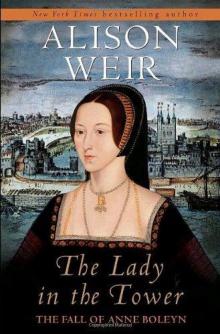 The Lady in the Tower: The Fall of Anne Boleyn
The Lady in the Tower: The Fall of Anne Boleyn Six Wives of Henry VIII
Six Wives of Henry VIII Elizabeth of York: A Tudor Queen and Her World
Elizabeth of York: A Tudor Queen and Her World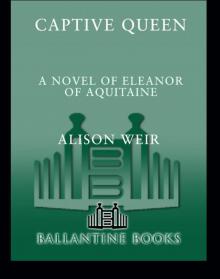 Captive Queen
Captive Queen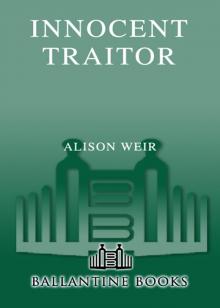 Innocent Traitor
Innocent Traitor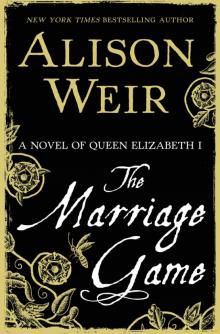 The Marriage Game
The Marriage Game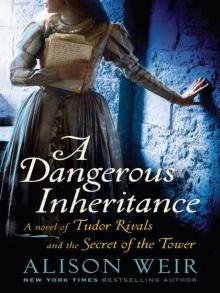 A Dangerous Inheritance
A Dangerous Inheritance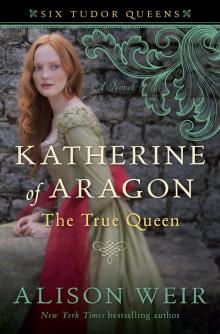 Katherine of Aragón: The True Queen
Katherine of Aragón: The True Queen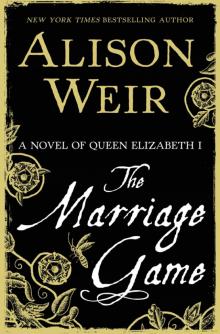 The Marriage Game: A Novel of Queen Elizabeth I
The Marriage Game: A Novel of Queen Elizabeth I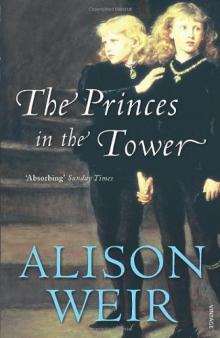 Princes in the Tower
Princes in the Tower Anne Boleyn: A King's Obsession
Anne Boleyn: A King's Obsession Traitors of the Tower
Traitors of the Tower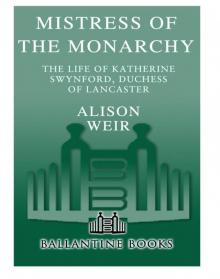 Mistress of the Monarchy: The Life of Katherine Swynford, Duchess of Lancaster
Mistress of the Monarchy: The Life of Katherine Swynford, Duchess of Lancaster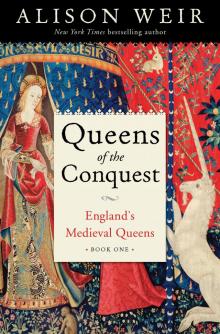 Queens of the Conquest: England’s Medieval Queens
Queens of the Conquest: England’s Medieval Queens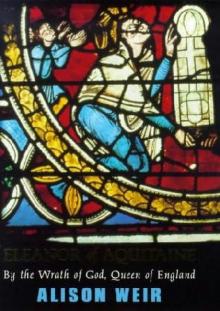 Eleanor of Aquitaine: A Life
Eleanor of Aquitaine: A Life Mary, Queen of Scots, and the Murder of Lord Darnley
Mary, Queen of Scots, and the Murder of Lord Darnley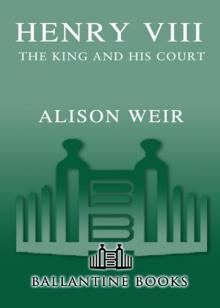 Henry VIII: The King and His Court
Henry VIII: The King and His Court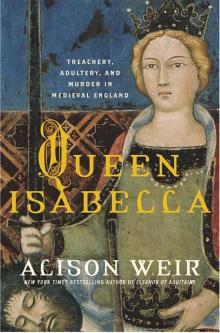 Queen Isabella: Treachery, Adultery, and Murder in Medieval England
Queen Isabella: Treachery, Adultery, and Murder in Medieval England Katheryn Howard, the Scandalous Queen
Katheryn Howard, the Scandalous Queen Arthur- Prince of the Roses
Arthur- Prince of the Roses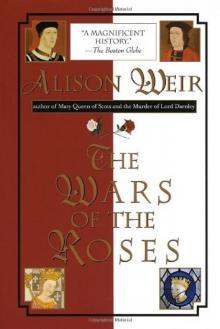 The Wars of the Roses
The Wars of the Roses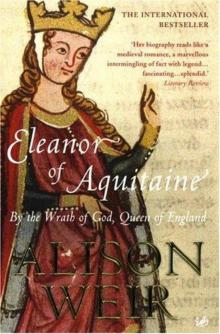 Eleanor of Aquitaine: By the Wrath of God, Queen of England
Eleanor of Aquitaine: By the Wrath of God, Queen of England Mary Boleyn: The Great and Infamous Whore
Mary Boleyn: The Great and Infamous Whore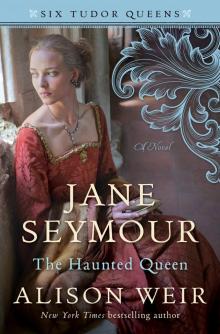 Jane Seymour: The Haunted Queen
Jane Seymour: The Haunted Queen Anna of Kleve, the Princess in the Portrait
Anna of Kleve, the Princess in the Portrait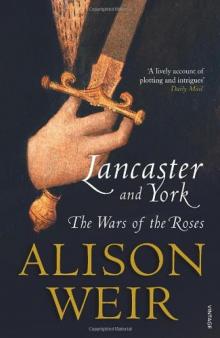 Lancaster and York: The Wars of the Roses
Lancaster and York: The Wars of the Roses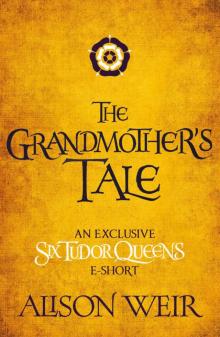 The Grandmother's Tale
The Grandmother's Tale The Princess of Scotland (Six Tudor Queens #5.5)
The Princess of Scotland (Six Tudor Queens #5.5)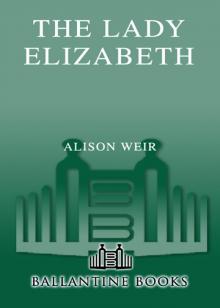 The Lady Elizabeth
The Lady Elizabeth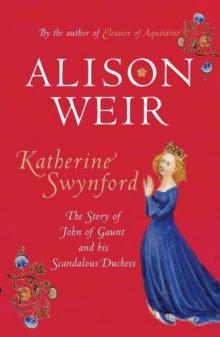 Katherine Swynford: The Story of John of Gaunt and His Scandalous Duchess
Katherine Swynford: The Story of John of Gaunt and His Scandalous Duchess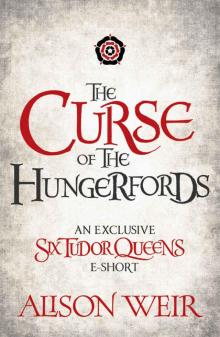 The Curse of the Hungerfords
The Curse of the Hungerfords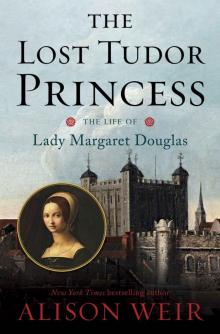 The Lost Tudor Princess: The Life of Lady Margaret Douglas
The Lost Tudor Princess: The Life of Lady Margaret Douglas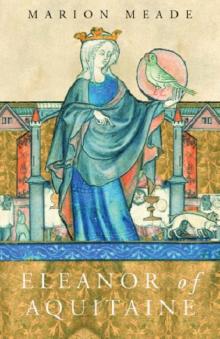 Eleanor of Aquitaine
Eleanor of Aquitaine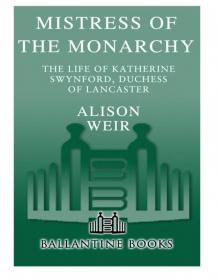 Mistress of the Monarchy
Mistress of the Monarchy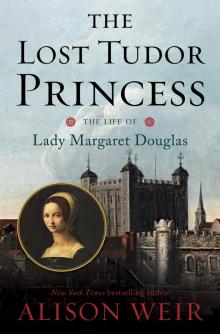 The Lost Tudor Princess
The Lost Tudor Princess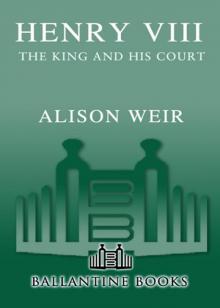 Henry VIII
Henry VIII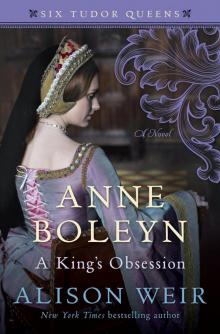 Anne Boleyn, a King's Obsession
Anne Boleyn, a King's Obsession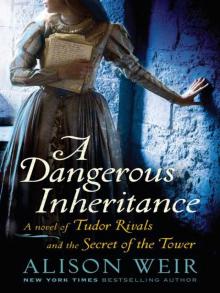 A Dangerous Inheritance: A Novel of Tudor Rivals and the Secret of the Tower
A Dangerous Inheritance: A Novel of Tudor Rivals and the Secret of the Tower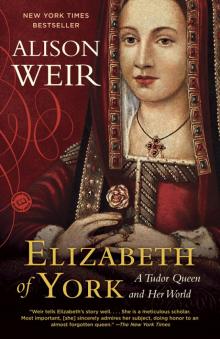 Elizabeth of York
Elizabeth of York Katherine of Aragon, the True Queen
Katherine of Aragon, the True Queen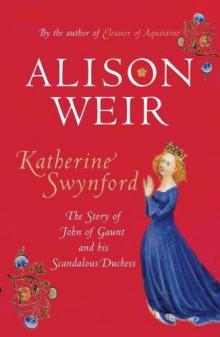 Katherine Swynford
Katherine Swynford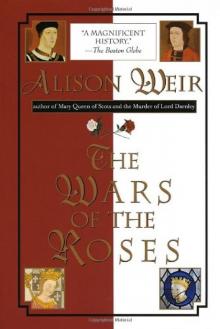 Wars of the Roses
Wars of the Roses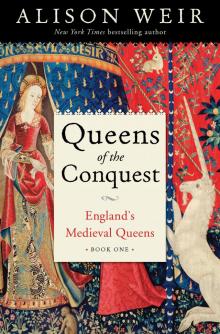 Queens of the Conquest
Queens of the Conquest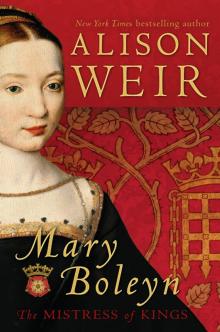 Mary Boleyn
Mary Boleyn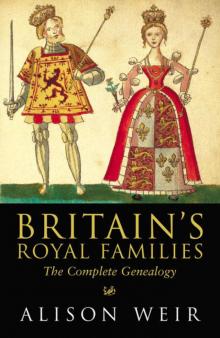 Britain's Royal Families
Britain's Royal Families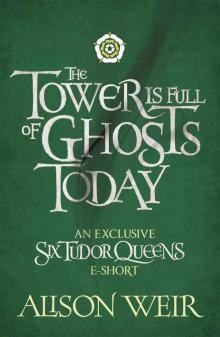 The Tower Is Full of Ghosts Today
The Tower Is Full of Ghosts Today Life of Elizabeth I
Life of Elizabeth I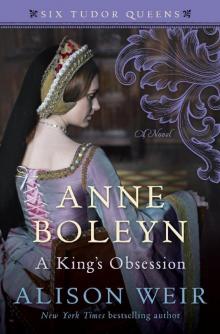 Anne Boleyn A King's Obssession
Anne Boleyn A King's Obssession Lancaster and York
Lancaster and York Jane Seymour, the Haunted Queen
Jane Seymour, the Haunted Queen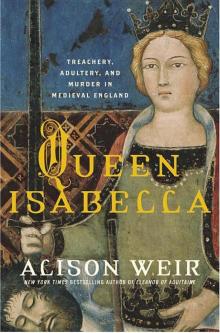 Queen Isabella
Queen Isabella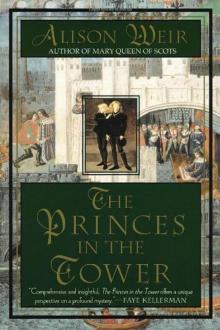 The princes in the tower
The princes in the tower